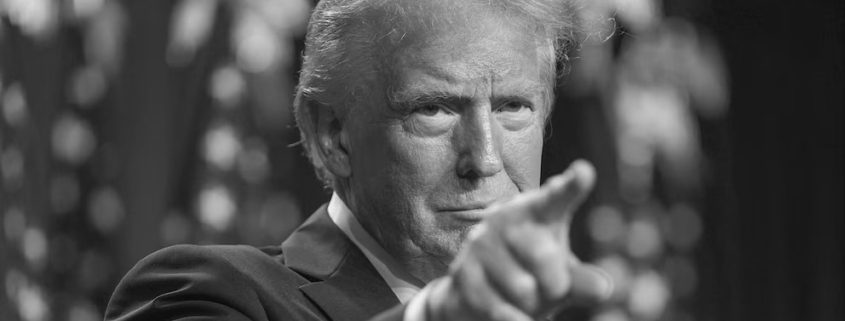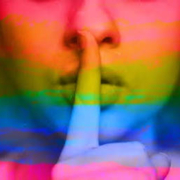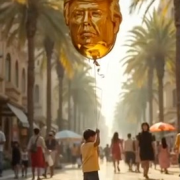What Painted USA SO Indelibly Red!?
The Vortex of It All
I stood there with my husband. Late. It was 8 PM, and we had been waiting for two hours. I couldn’t quite figure out why this election was so emotional, even for me. Don’t get me wrong—if you knew me, you’d know me as one of the most emotional people you’ve ever met. At work, they typically use the word intense. I feel everything deeply. Please don’t send me ideas on how to adjust this part of my personality; I’ve tried everything. At some point, it just becomes part of who you are. I care, deeply. Period. Sorry, not sorry.
But politics? In the past, that was a hard pass for me. Yet, here I was, sucked into the vortex of this election. Into the emotion. Into the pride. And it was so loud—all of it. No matter what side you found yourself on, this was the moment. What moment? I wasn’t certain.
I looked up at my husband, uncertain about the emotions I was feeling, as a large truck rolled by, “TRUMP 2024!” echoing across the library parking lot.
Immediately, I was pulled back into the fall of 1998. Standing wide-eyed, curious, nervous, and excited as I stared up at the bare chests, painted in red and blue letters spelling “SENIORS.” I didn’t care much for the machismo, even then. But everyone else seemed enthralled. When so much shade was being thrown at the opposing team, by comparison, it made these hype guys seem so old, so cool. So much cooler than I.
In the halls, the following Monday, hung pictures of people I had never met – save for one bare-chested Senior – with slogans of “Vote for Cameron.” And not much more to it. As if, by theory and logic, that was enough.
Streamers, chants, and mascots in tow; Cameron won that year.
Hearing the growl and screeching tires that followed “TRUMP 2024,” it hit me. That’s what this feeling was. For better or worse, depending on your personal preference, the Trump campaign had recreated the high school elections that never ended. Complete with bare-chested, oh-so-cool good ol’ boys, streamers, chants, prom queens, cheerleading captains, and even mascots.
This was the TRUMP campaign. There was one goal: draw a line in the sand and pull in those voters from the middle. It’s Us vs. Them at all costs.
The “Us vs. Them” Dilemma
Campaigns thrive on division. It’s easier to mobilize when people believe there’s an existential battle to win. And in the Trump era, that dichotomy became more than just politics—it became identity. The rhetoric didn’t just pit one party against another; it vilified, dehumanized, and dismissed. It transformed political discourse into a black-and-white battleground where moderates, independents, and centrists were told their middle-ground perspectives were weak, naive, or even traitorous.
And it wasn’t just Trump’s side. The opposition also became just as reactive, just as loud, and just as eager to turn politics into a moral crusade where compromise felt like betrayal. “If you don’t denounce this, you’re complicit.” “If you question that, you’re the enemy.” Instead of a spectrum of thought, we had a schoolyard showdown.
The Post-Election Reality Check: Politics Is Never That Simple
But the thing about political fervor is that it fades. The high of the campaign, the rallies, the memes, the daily outrage—it all eventually meets the grind of governance. And in that moment, when the dust settles, the reality becomes clear: no single party has all the answers. The complexities of running a country don’t fit neatly into campaign slogans, and the idea that one side is purely good while the other is entirely corrupt is a fantasy that conveniently ignores history.
Both parties, at their core, struggle with the same problem: power. Power seeks to sustain itself, and when wielded irresponsibly, it erodes the very democracy it claims to uphold. What we saw in the aftermath of the election was not a revolution, but a return to the same classic political stalemate—one where meaningful change gets drowned out by partisan theatrics.
The Middle Ground
The truth is, that real progress isn’t found in the extremes. It’s found in the middle, in the conversations that don’t make headlines, in the quiet work of bridging gaps rather than deepening them. Good politics isn’t about one side crushing the other; it’s about governance that considers everyone—even those who disagree.
And at the core of that is something simple but often overlooked: love and connection.
It’s easy to get swept up in the fight. It’s harder to pause and ask: What if we chose to listen instead? What if we leaned into our shared humanity rather than our ideological differences? What if, instead of feeding into the outrage machine, we sought to understand?
Here’s the reality of it all; left or right. Humanity is comprised of individuals, but much like microbots we can form one think tank, one neurotransmitter, so to speak, and whoever wears the neurotransmitter controls the pack. That is not leadership. We have to be careful in all our circles to look for diversity and individualized theory. Unto politics. Unto school. Unto church. Unto social networks. Unto family dinners.
For me, that meant to stop letting a few cable news and social media personalities dictate my emotions. To be cognizant of and beware of national hysteria. To hear from both sides of the platform. I had to research beyond party labels and support candidates who prioritize solutions over soundbites and who focus on policy over performance.
But mostly it meant that I had to choose to love those around me. Listen to opposing views with curiosity. To understand motives and intentions.
To look for the back story. In other words: I had to look people in the eye, instead of from behind smoke scenes of national hysteria. It’s a lot harder to be dismissive, angry and shut down when you look someone in the face. I had to give people around me their humanity back. I had to love the people and community I had, not fault it at every turn.
In this way, truth is not only tested but it is found.
The Next Chapter
The spectacle is over. The chants have faded. The flags are no longer flying from truck beds. But what remains is our choice.
We can keep playing the same game—choosing sides, embracing the outrage, shouting across the divide—or we can build something better.
We can choose to leave the place better than it was when we got here.










Leave a Reply
Want to join the discussion?Feel free to contribute!